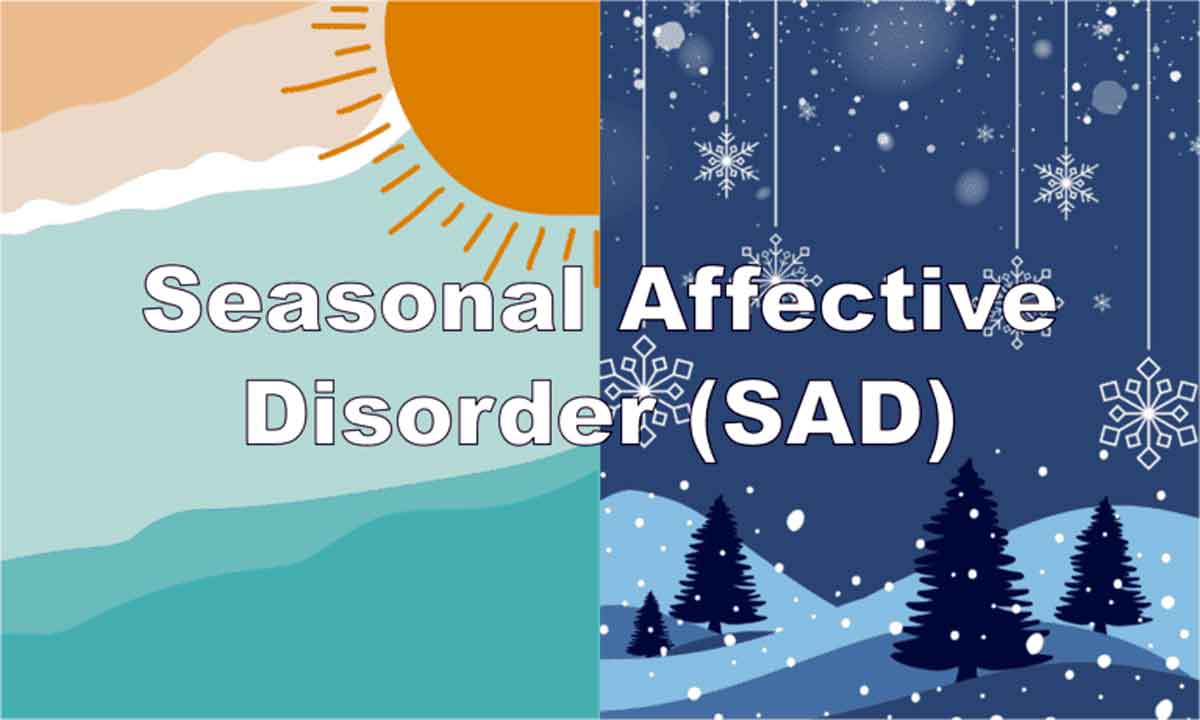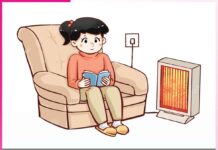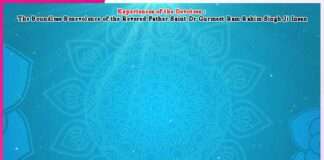The Growing Issue of Seasonal Depression and How to Combat It
Introduction: Seasonal depression, also known as Seasonal Affective Disorder (SAD), is a mental health condition that typically emerges during specific seasons, most often in the winter months. As the days become shorter and the weather turns colder, many individuals find themselves experiencing symptoms of depression, including fatigue, irritability, lack of motivation, and social withdrawal. While it is common for people to feel a bit “down” during certain times of the year, SAD is a more intense and chronic form of depression that can significantly affect daily functioning and overall quality of life.

Table of Contents
Understanding Seasonal Affective Disorder
Seasonal Affective Disorder is classified as a type of depression that occurs at specific times of the year, most commonly in the fall and winter. However, some individuals experience SAD during the spring or summer months, though this is less common. The hallmark feature of SAD is that it typically appears and recedes in a seasonal pattern, with symptoms appearing during the colder, darker months and improving or disappearing during the warmer, brighter months.
SAD is thought to be linked to changes in the amount of sunlight exposure, which can disrupt the body’s internal clock, or circadian rhythm.
Causes of Seasonal Depression
While the exact cause of SAD is still not fully understood, several factors are believed to contribute to the onset of seasonal depression:
- Reduced Sunlight Exposure: Sunlight is a key regulator of our biological rhythms, and a lack of it during the fall and winter months can have significant impacts on mood regulation. Reduced exposure to natural light can lead to lower levels of serotonin, a neurotransmitter associated with feelings of well-being and happiness.
- Circadian Rhythm Disruption: The body’s internal clock, or circadian rhythm, regulates many physiological processes, including sleep and mood. During the winter months, when days are shorter and nights are longer, our circadian rhythm can become misaligned. This misalignment can lead to symptoms such as fatigue, difficulty waking up, and a general sense of sluggishness or low energy.
- Vitamin D Deficiency: In the winter months, when sunlight exposure is limited, many people may experience a deficiency in vitamin D. Research suggests that low levels of vitamin D can contribute to symptoms of depression and other mood disorders.
- Genetic and Biological Factors: Some individuals may be genetically predisposed to developing SAD. Family history of depression or other mood disorders can increase the likelihood of experiencing seasonal depression. Additionally, biological factors such as hormonal imbalances or abnormalities in brain chemistry may play a role in the development of SAD.
- Environmental and Lifestyle Changes: Seasonal changes in lifestyle, such as spending more time indoors, reduced physical activity, and social isolation, can also contribute to the onset of seasonal depression. The lack of physical activity and social interaction during the colder months can exacerbate feelings of sadness and isolation.
Symptoms of Seasonal Depression
The symptoms of SAD are similar to those of major depression but tend to occur during specific times of the year. Common symptoms of seasonal depression include:
- Persistent Sadness or Low Mood: Individuals with SAD often experience a pervasive sense of sadness or hopelessness, which may be more intense than usual seasonal fluctuations in mood.
- Fatigue and Low Energy: People with SAD may feel unusually tired or lethargic, even after a full night’s sleep.
- Changes in Sleep Patterns: Many individuals with SAD experience oversleeping or difficulty waking up in the morning, while others may have trouble sleeping at all.
- Weight Gain or Changes in Appetite: Some individuals may experience cravings for carbohydrates, leading to overeating and weight gain. Conversely, others may experience a loss of appetite.
- Difficulty in Concentrating: The fatigue and low mood associated with SAD can make it difficult to focus or complete tasks.
- Social Withdrawal: People with SAD may feel the desire to isolate themselves from others and may avoid social activities that they normally enjoy.
- Loss of Interest in Activities: Hobbies, interests, and activities that once brought joy may no longer feel rewarding or engaging.
The Growing Prevalence of Seasonal Depression
Seasonal depression has been a known phenomenon for decades, but its prevalence has been increasing in recent years. Several factors are contributing to the rising rates of SAD:
- Changing Climate and Weather Patterns: With shifts in climate and increasingly erratic weather patterns, certain regions are experiencing longer winters with reduced sunlight, which may contribute to a rise in seasonal depression. Longer, harsher winters and reduced daylight hours make it more difficult for individuals to maintain their mental well-being.
- Urbanization and Lifestyle Changes: Modern urban lifestyles often involve long hours indoors, especially in office jobs, and limited access to outdoor spaces. The rise of technology and increased screen time can also reduce opportunities for natural sunlight exposure. Additionally, the hustle and bustle of modern life can exacerbate stress, leading to a higher incidence of depression overall.
- The COVID-19 Pandemic: The global pandemic has further heightened the mental health crisis, with widespread social isolation, anxiety, and lifestyle disruptions. Many individuals with preexisting mental health conditions, including those with SAD, saw their symptoms worsen due to lockdowns and limited access to social support. The pandemic’s impact on daily routines and increased screen time also led to less exposure to natural sunlight.
- Lack of Awareness: Despite increasing recognition of SAD, many individuals may still not fully understand the condition or may dismiss their symptoms as “just the winter blues.” This lack of awareness can delay treatment and make it harder for individuals to seek help when they need it most.
Combating Seasonal Depression
While the challenges of seasonal depression can feel overwhelming, there are several effective strategies for managing and even alleviating the symptoms of SAD. A combination of lifestyle changes, therapy, and medical interventions can help individuals cope with seasonal depression and improve their overall mental well-being.
Light Therapy
One of the most well-established treatments for SAD is light therapy, also known as phototherapy. Light therapy involves exposure to a bright light source that mimics natural sunlight, typically for 20-30 minutes each morning. This treatment is believed to help regulate circadian rhythms, increase serotonin production, and improve mood. Many people with SAD find that using a light box in the morning can help alleviate symptoms and improve their overall energy levels.
Spending Time Outdoors
Even on cloudy or cold days, spending time outdoors during daylight hours can help increase exposure to natural light. Taking a walk in the morning or afternoon can also promote physical activity, which has a positive impact on mood. Exposure to natural light, especially during the early hours of the day, can help reset the body’s internal clock and improve sleep patterns.
Exercise and Physical Activity
Regular physical activity has been shown to have a significant positive impact on mental health, including reducing symptoms of depression and anxiety. Engaging in outdoor activities, such as walking, jogging, or hiking, can boost endorphins and help regulate sleep patterns. Even simple activities like yoga or stretching indoors can improve mood and energy levels.
Healthy Diet and Nutrition
Maintaining a balanced diet rich in nutrients, including vitamins D and B, omega-3 fatty acids, and antioxidants, can support mental health and reduce the severity of depressive symptoms. Eating regular meals and avoiding excessive sugar or caffeine can also help stabilize mood and energy levels. In some cases, vitamin D supplements may be recommended by a healthcare provider, especially during the winter months when sunlight exposure is limited.
Cognitive Behavioral Therapy (CBT)
Cognitive Behavioral Therapy (CBT) is a widely used therapeutic approach for treating depression and anxiety, including SAD. CBT helps individuals identify and change negative thought patterns and behaviors that contribute to feelings of hopelessness or helplessness. Through CBT, individuals can learn coping skills and strategies for managing stress, improving sleep, and building more positive and realistic outlooks on life.
Medication
In some cases, antidepressant medications may be prescribed to help manage the symptoms of SAD. Selective serotonin reuptake inhibitors (SSRIs) are commonly used to increase serotonin levels in the brain and alleviate feelings of depression. For individuals with more severe or chronic symptoms, medication may be a necessary part of the treatment plan.
Social Support
Maintaining social connections, even when the weather is dreary, is crucial for managing SAD. Reaching out to friends and family, participating in online or in-person support groups, or engaging in social activities can help combat feelings of isolation. The sense of connection and belonging that comes from socializing can significantly boost mood and energy levels.
Conclusion
Seasonal Affective Disorder is a growing issue that affects millions of individuals worldwide, with symptoms that can significantly impact daily functioning and quality of life. While the specific causes of SAD are complex, reduced sunlight exposure, circadian rhythm disruptions, and lifestyle factors all contribute to its onset. However, there are numerous effective treatments and coping strategies that can help individuals manage and combat seasonal depression.














































